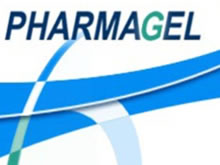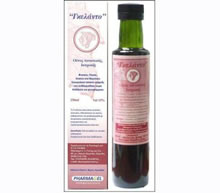
Λεξικό .. Aspirin triad or Samter’s triad or Widal’s triad
Aspirin triad or Samter's triad or Widal’s triad, … Widal .
In 1922, Widal et al. were the first to describe intolerance reactions to acetylsalicylic acid (ASA, e.g. in aspirin) and to other nonsteroidal anti-inflammatory drugs (NSAIDs). The full clinical picture reveals a classic triad of symptoms (Samters Triad): aspirin induced bronchial asthma (with severe acute asthma attacks), aspirin-sensitivity and chronic rhinosinusitis with nasal polyps. In many cases, nasal polyps reveal as the first symptom of ASA sensitivity indicating that the upper airways are predominantly involved in the pathogenetic process [1]. Kim JE, Kountakis SE (2007) conducted a retrospective study to determine the prevalence of Samter's triad (nasal polyps, asthma, and aspirin sensitivity) in 208 consecutively presenting patients who had undergone functional endoscopic sinus surgery (FESS) for chronic rhinosinusitis from September 2001 through August 2003.
Overall, Samter's triad was found in 10 patients (4.8%); subgroup analyses showed that the prevalence of Samter's triad was 5.9% in adults, 9.4% in patients with nasal polyps alone, 16.9% in patients with asthma alone, and 25.6% among patients with both polyps and asthma. On average, patients with Samter's triad had undergone approximately 10 times as many previous FESS procedures as had the patients without Samter's triad (mean: 5.2 vs. 0.53; p < 0.001). In addition to Samter's triad, four other factors were independently and significantly associated with a higher number of previous FESS procedures: nasal polyps alone, asthma alone, both polyps and asthma, and cystic fibrosis alone.
Finally, at 6 months following their most recent surgery, patients with Samter's triad had significantly higher rates of symptom recurrence (nasal obstruction, facial pain, postnasal drip, and anosmia) and a recurrence of nasal polyps[2]. The incidence of aspirin hypersensitivity in the general population ranges from 0.6 % to 2.5% and in adult asthmatics from 4,3 % to 11%. Besides the patients history, challenge tests with Lysin-aspirin are performed as the diagnostic tool of choice. Apart from surgical or pharmacological therapy, ASA desensitization therapy is the only specific treatment of choice.
As first described by Stevensson et al. in the early 1984, oral administration by means of an initial desensitization with gradually ascending doses of aspirin is followed by a daily maintenance-dose. In the last years, many publications on various desensitization protocols and routes of administration have been worked out. Recently, the intravenous route for the inititial increment desensitization has been described which might offer new therapeutical possibilities in the treatment of ASA-intolerant patients [1]See Aspirin intolerance and Aspirin idiosyncrasy.
References
1.Pfaar O, Klimek L. Eicosanoids, aspirin-intolerance and the upper airways--current standards and recent improvements of the desensitization therapy. J Physiol Pharmacol. 2006 Dec;57 Suppl 12:5-13.
2. Kim JE, Kountakis SE. The prevalence of Samter's triad in patients undergoing functional endoscopic sinus surgery. Ear Nose Throat J. 2007 Jul;86(7):396-9.
Γκέλης Ν.Δ. - Λεξικό Αλλεργίας - Εκδόσεις ΒΕΛΛΕΡOΦΟΝΤΗΣ - Κόρινθος 2013
Gelis Ν.D. - Dictionary of Allergies - VELLEROFONTIS Publications - Corinth 2013




